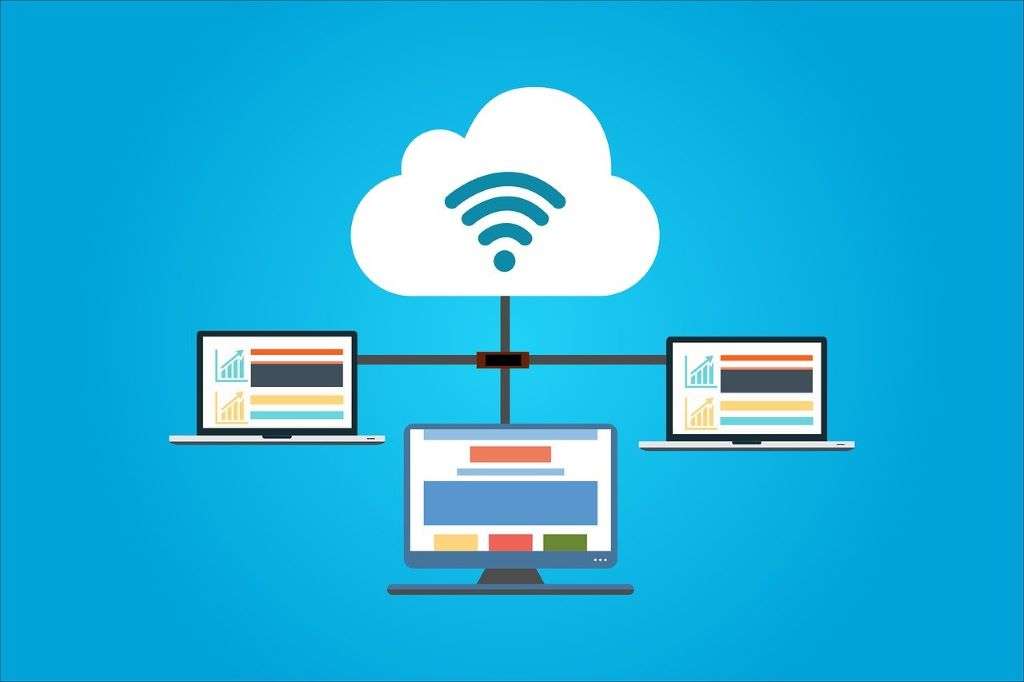As we navigate the digital landscape of the 21st century, ‘cloud computing’ has emerged as a term that’s just as ubiquitous as it is misunderstood.
Its prevalence in our daily lives — from storing our photos to powering businesses — has been transformative.
Yet, many remain unclear about what exactly the cloud is and how it works.
This article offers an in-depth look at cloud computing, providing a beginner-friendly guide to understanding this pivotal technology.
Table of Contents
Defining Cloud Computing
In the simplest terms, cloud computing is the delivery of computing services over the internet, or the “cloud”, rather than using local servers or personal devices.
These services include servers, storage, databases, networking, software, analytics, artificial intelligence, and more.
Instead of owning and maintaining physical data centers and servers, companies can access technology services on an as-needed basis from a cloud service provider.
Types of Cloud Computing Services
Cloud computing services typically fall into three main categories: Infrastructure as a Service (IaaS), Platform as a Service (PaaS), and Software as a Service (SaaS).
- Infrastructure as a Service (IaaS): This is the most basic category of cloud computing services. With IaaS, businesses rent IT infrastructure — servers, virtual machines, storage, networks, operating systems — from a cloud provider on a pay-as-you-go basis.
- Platform as a Service (PaaS): This category is designed to give developers the tools they need to build and host web applications. PaaS includes infrastructure servers, storage, and networking, but also middleware, development tools, business intelligence (BI) services, database management systems, and more.
- Software as a Service (SaaS): In this service model, cloud providers host and manage the software application and underlying infrastructure and handle any maintenance, such as software upgrades and security patching. Users connect to the application over the internet, typically through a web browser on their phone, tablet, or PC.
Cloud Deployment Models
Beyond service types, there are three ways to deploy cloud services: on a public cloud, private cloud, or hybrid cloud.
- Public Cloud: Public clouds are owned and operated by third-party cloud service providers. With a public cloud, all hardware, software, and other supporting infrastructure are owned and managed by the cloud provider.
- Private Cloud: A private cloud refers to cloud computing resources used exclusively by a single business or organization. A private cloud can be physically located on the company’s on-site data center, or it can be hosted by a third-party service provider.
- Hybrid Cloud: Hybrid clouds combine public and private clouds, bound together by technology that allows data and applications to be shared between them.
Benefits of Cloud Computing
Cloud computing offers several advantages, including:
- Cost Efficiency: Cloud computing eliminates the capital expense of buying hardware and software and setting up and running on-site data centers.
- Speed and Performance: Cloud computing services are provided on demand and run on a worldwide network of secure data centers, which are upgraded regularly to the latest generation of fast and efficient computing hardware.
- Scalability: Cloud computing provides the flexibility of scaling up or down your computing power to meet business needs.
- Security: Cloud computing can help businesses protect their data and applications from potential threats as many cloud providers offer a set of policies, technologies, and controls.
The Future of Cloud Computing
The future of cloud computing is likely to be characterized by continued growth and innovation.
Emerging trends such as hybrid and multi-cloud strategies, artificial intelligence (AI), machine learning, and the rise of edge computing will shape the future of cloud computing.
Conclusion
Cloud computing has changed the landscape of business and technology in profound ways.
Its ability to provide on-demand access to computing resources has paved the way for flexible, efficient, and cost-effective IT solutions.
Understanding the basics of cloud computing is vital in today’s digital age. As technology continues to advance, the cloud’s potential to transform and enable business innovation is vast.
FAQs for Cloud Computing:
- What is Cloud Computing?
- Cloud Computing is a technology that enables users to access and utilize computing resources (such as servers, storage, databases, networking, software) over the internet, often referred to as “the cloud,” on a pay-as-you-go basis.
- What are the key characteristics of Cloud Computing?
- Cloud Computing is characterized by on-demand self-service, broad network access, resource pooling, rapid elasticity, and measured service. These features allow flexibility and efficient use of resources.
- How does Cloud Computing differ from traditional computing?
- In traditional computing, users manage and maintain their own physical hardware and software. In Cloud Computing, these resources are provided and managed by third-party service providers, allowing users to focus on their applications and data.
- What are the different service models in Cloud Computing?
- Cloud Computing offers Infrastructure as a Service (IaaS), Platform as a Service (PaaS), and Software as a Service (SaaS). IaaS provides virtualized computing resources, PaaS offers a platform for application development, and SaaS delivers software applications over the internet.
- What are the deployment models in Cloud Computing?
- Cloud Computing deployment models include Public Cloud (shared resources accessible over the internet), Private Cloud (dedicated resources for a single organization), Hybrid Cloud (combination of public and private clouds), and Multi-Cloud (use of multiple cloud service providers).
- What are the advantages of Cloud Computing?
- Cloud Computing offers cost savings, scalability, flexibility, accessibility, and the ability to focus on core business functions. It also facilitates collaboration, disaster recovery, and automatic updates.
- Is Cloud Computing secure?
- Security is a top priority in Cloud Computing. Cloud service providers implement robust security measures, including encryption, identity and access management, and regular security audits. However, users should also implement best practices to secure their data.
- How does Cloud Computing support businesses?
- Cloud Computing enables businesses to scale their operations easily, access advanced technologies, reduce infrastructure costs, and improve collaboration. It fosters innovation by providing a platform for rapid development and deployment of applications.
- What challenges are associated with Cloud Computing adoption?
- Challenges may include data security concerns, compliance issues, potential downtime, and the need for skilled personnel. However, these challenges can be mitigated with proper planning and adherence to industry best practices.
- How is Cloud Computing evolving with emerging technologies?
- Cloud Computing continues to evolve with emerging technologies such as edge computing, serverless computing, and containerization. These advancements enhance the efficiency, performance, and versatility of cloud-based solutions.
These FAQs provide a foundational understanding of Cloud Computing, covering its definition, key characteristics, service and deployment models, security, advantages, and its evolution with emerging technologies.



Comments